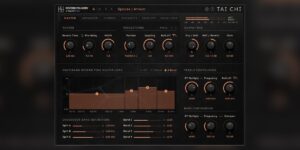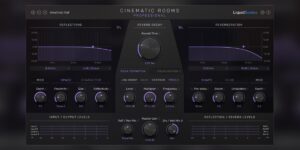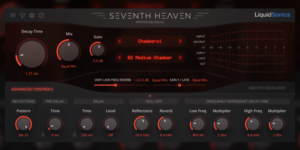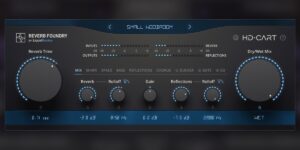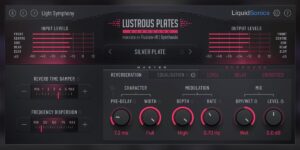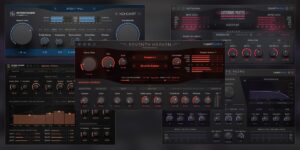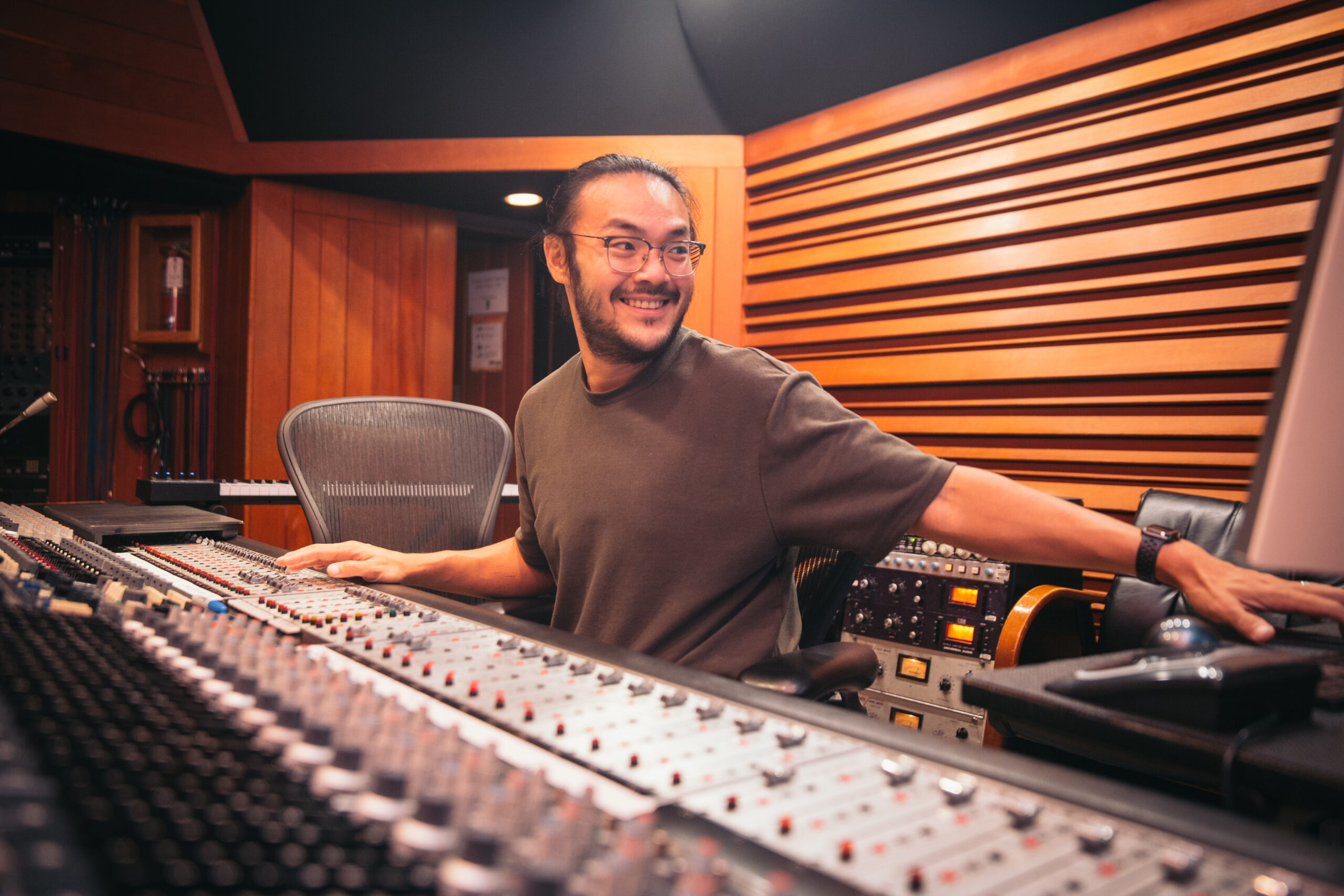
Alvin Wee is one of the hottest talents in Hollywood right now, having been one of the sound team on the Disney hit, Encanto. However, his credits include other huge movies including Top Gun: Maverick, No Time To Die and the TV show She-Hulk: Attorney at Law.
We sat down with Alvin to talk about getting into the business, mixing, Atmos and, of course, reverb. Suffice to say… we don’t talk about Bruno!
Let’s just rewind. How did the whole sound thing start for you?
It started in Boston where I wanted to be an arranger, so I studied jazz composition, a little bit of writing, and a little bit of production, but I didn’t know the technical side of things. I decided that I needed to learn about how people do it. I’m originally from Malaysia, where recording arts and sound wasn’t a huge thing. So I enrolled on a program called Music Production & Engineering. Then I moved out to LA from Boston a couple years later after school and started working for a record producer. However, I wanted to learn about surround because that was where things were headed. Then I met another guy who was mixing for films and got a gig on The Kingsman, this was in 2014, I believe. That’s how it all started.
Was The Kingsman the big break?
Yes. I think that was my kind of big break into the industry. Then my first solo film as a mixer was ‘Dope’, which was a film that came out for Sundance in late 2014. ‘Dope’ got picked up for distribution. That film was done by Germaine Franco with Pharrell Williams. It had some really good backing and it had some minor commercial success. And that’s how I got my first solo gig mixing.
So tell us how the Encanto thing happened?
Like I said, my first film with Germaine Franco was back in 2014. During the pandemic she called me and said “I’m doing this thing with Disney and I think you’re the right person to do this because you know my sound and you’ve recorded with me for a long time. You know what I need in terms of a mix and you know how to get both the live band sound and the live orchestral sound. It’s gonna be a Disney production!” Of course, I jumped at the opportunity.
By the time I got on they had started putting all the animation together. I saw a couple of frames and thought, “My God, this looks fantastic!” When it came out people loved it.
Did you feel a weight on you with it being a Disney Animation Studios movie?
Oh, absolutely!
Did you have imposter syndrome?
Oh, I still have imposter syndrome today but I tend to put fear aside and just get into it. I know there is always a lot of uncertainty when you go into a project but for me Disney is something that I grew up watching, so you’ve got to do it right. I was absolutely terrified to be honest, but like everyone else, you go in and you do your best.
From the outset were you going to be mixing Encanto in Atmos, have you made a fluid transition into Atmos from previous surround formats or have you had to rethink your entire mixing process?
I had, yes, absolutely. Especially thinking further down for the soundtrack and how that’s going to translate because at least if you’re mixing in for the film itself they still have the re-recording mixer and there’s still a layer of translation that’s being, if you will, quality controlled.
I think the challenge was figuring out how I rejig my template so that I could mix for Atmos and have all the flexibility I needed – routings, with all these beds and actual channels. It was a case of, okay, how do I make that right and make it sound like it still translates from a surround or stereo format up and doesn’t feel like it’s just a random upmix of a five channel, six channel or stereo channel.
Obviously the score is just part of the puzzle in the Atmos mix because you’ve got dialogue and effects and all that sort of stuff, so were you trying to second guess what they might do once you passed it over to the next team? Were you working alongside them during the process?
It was quite interwoven in the sense that they were like, we need this as objects and we need these as beds, they were very specific. David Fluhr, who was the re-recording mixer on Encanto, he is the mastermind behind it all, for example would ask me to deliver stems in mono, or if he needed the reverbs, he would say can you put it on the rest of the channel, the center channel, or however he wanted to do it.
I would then deliver that for him so he knew where the locations of all the individual parts of the sound were and then he would put it into his rig system up in Skywalker and see how the sound affected his dialogue and then they could pan it around as they saw fit for the entire picture.
You’re a big fan of LiquidSonics reverbs now. How helpful are things like Cinematic Rooms and Seventh Heaven?
Seventh Heaven has been a huge part of my sound in the last year. I was a little late coming into it because I had colleagues who were using them before that. When I got into this score, I was still trying to build my own reverbs to get the utmost limits of the reverb. I had Seventh Heaven, the stereo version, that I was building, and I was trying to jig up a crossed over version of a surround thing and tried that. Really old school, four or five instances of Seventh Heaven doing its work and then doing that for every stem because if I wanted the strings that way the brass should be that way as well, and the orchestral percussion too.
So I ended up with, I would say, three instances on each stem and I think I had fourteen stems as I only used it on the critical stems and then the rest was just a regular surround reverb. Then I heard about Seventh Heaven Professional’s surround update, or at least I finally had time to pull up the reverb to play with it when we then moved on to the soundtrack.
I had a pre-release version of Seventh Heaven Professional featuring surround and when we got in the studio I was with Dave Boucher, who mixed “We don’t talk about Bruno”and I said, hey, let’s use this, and he said yeah, of course, that’s what I use anyway. So that was the default sound of Encanto.
How much of a difference has it made having all these reverbs converted across to Atmos?
Oh, I’m not going back. I will never go back. The fact that you can change the cross feed, the fact that the ducking feature has been such a lifesaver on everything we do, especially in surround where if you have too much reverb, you start sucking up the rest of the sound and it just feels really wet.
I know of a lot of pop productions where you want to do that to the vocals and lead instruments but I have been trying to use that in this world and also trying to find creative ways of doing it so that I can maybe rhythmically, duck something and have it be part of the sound. So when you hear it, it’s disappearing, making it dry and coming back out and giving it some sort of really cool ambience to the instruments.
So you are using it not just on vocals, but on other kinds of instrumentation, just to keep things under control?
Yeah. I know a lot of people who at least don’t like putting reverbs on low end instruments and I figured it’s a kind of a cool sound and sometimes I like doing that, like upright bass, for example. That’s something I’m starting to put reverb on a little bit, just to give it that little bit of glue in the surround space. And sometimes they slap it (the upright bass in this example) and you get the high end and you don’t want that to splash immediately in the reverb and all that so that’s how I’ve been using the duckers on Seventh Heaven and it’s been very helpful.
So it sounds like you use them in a way that it’s almost like you’re just kissing the ducker in the sense that it’s not there most of the time, but now and again it’s just dealing with a problem that you’ve got that you have to mess around with in the mix or use automation in previous ways.
Yeah, absolutely, and I think that meeting the Atmos needs of most reverbs right now, or most mixes, it’s been very helpful.
You sent me an email recently saying that loads of people you know have now got it in their template.
Every composer I’m speaking to has this huge Vienna library and are like, ‘hey man, I saw your thing and we’re just loading Seventh Heaven right now’. I’m like, yeah, go for it. I’m a big supporter. Engineers and mixers, and even I, work in a space where there’s other mixers as well, and they’re starting to get into the Atmos game. They work mostly in R&B and they ask hey, how do you do this Atmos thing? And I say just pick up a copy of this, a couple of plugins (SHP and CRP) and I think you’d be good with reverbs.
When we first thought about doing the plates in Atmos, we had to stop ourselves because there’s a danger with these things where you think let’s just make the plate Atmos. But then we had to step back and think plates have never been that way so we had to really think hard about how we’d make a plate work in Atmos and we had to do some real clever tricks. If you’re mixing a big score in Atmos, you’ve got to know that if it ends up on stereo, that things don’t just fall off the planet because they’ve disappeared into a phase hole. Have you had much time to play with Lustrous Plates Surround in Atmos?
Not enough. I had it on one of the tracks in Encanto for sure, and I know Dave (Boucher) was using it quite quite a bit on the vocals. We were in a very well calibrated room, but there was a lot of attention put into the listening experience on the headphones because that’s a huge part of the Atmos mixes that gets to the listeners. I heard a lot of it in headphones and while I was in the studio I kept putting the headphones on and taking them off and checking out the speakers and the plates. I’m a big fan of the plates.
That’s why I’m just starting to revisit templates and it is a very slow process that can take ten years so that’s my next phase right now. I’m rethinking my template because I have a couple of reverbs that I like, and, I’ll have one like Cinematic Rooms that I want to just put into a space, and another one that gives you that really nice tail, so I have different ones for different purposes.
I do like the plates on vocals a lot, and also on drums, especially up in the ceilings you want to make sure that it’s not just splashy crap that’s just mush up there. I’m just rethinking that right now and figuring out how I can put all of that together and redo my template.
Once I take a break from what I’m currently working on, I’m gonna take at least two weeks off and redo everything in the studio.
Have you had a chance to play with Tai Chi yet which is an ensemble reverb full of chorusing?
Yes! I started adding them on all my new tracks including the most recent Marvel Disney+ series, She-Hulk: Attorney at Law. Everyone who’s heard one of my recent mixes without fail will ask about it. I’m not shy about the way I use it and all my colleagues have been loving it.
Yeah, throw that on and just sit back and smile. It’s like a huge blanket of chorus. Especially if you’ve got a big monster synth, you can get those big 1980s, Jupiter whoosh sounds, which is great. And it’s got some clever tricks as well, where you can apply it to just different frequency spectrums so you can have loads of chorus at the top end, but nothing in the middle or the bottom, which is great.
Fantastic, it looks amazing. I think that’s going to be very helpful. I don’t think with any of these five [LiquidSonics reverbs], I can say, oh, they’re interchangeable. They do their own thing and I think that’s fantastic.
Atmos is the big thing right now and a load of people are still scratching their head about it. What one challenge do you wish somebody had told you about when you were mixing in Atmos for the first time?
Just jump into it, honestly. I know it sounds scary and there’s all this additional stuff but it’s like riding a bike, you just have to get on, try it out and then, if you fall, either you get back on or take a bit of time and the more you do it, the better it is.
It’s just an extra format, extra speakers, to be honest, and, with tools like Cinematic Rooms and especially Seventh Heaven right now, you can get it to sound really good, very easily. And the thing is, how do you stop having a technical part, be a “hindrance” and just be as creative as possible because you just have all this additional dimension and you can definitely manipulate it to make it sound cool and also bring music and sound and mixing and all these other things into the future. So I would say jump into it – like me on Encanto I could have just said I’m terrified and I’m not going to do this, or just jump in, do it as well as I can and then hope it comes out with something really fun and it did. Just don’t be afraid.
Without putting words in your mouth, how much do you think the LiquidSonics reverbs helped in that transition to Atmos?
I think it’s one of the biggest reasons why I’m here right now. I don’t think I would be able to have done Atmos as quickly and as easily without all the LiquidSonics stuff.
Try LiquidSonics Range of Atmos-Compatible Reverbs For Yourself
LiquidSonics has a range of five surround and immersive reverbs, one of the largest selections in music and post production. Working in Atmos is becoming increasingly accessible, so it’s easier than ever to try an Atmos mix yourself with native support recently added to DAWs such as Cubase 12 and Logic Pro.
You can try a 14-day demo of every reverb in the portfolio to hear them for yourself, and don’t forget that existing owners can pick up some great price reductions from our upgrades and offers page.

